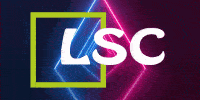In the digital age, LED signage has become a cornerstone of modern advertising, providing a dynamic and captivating means to communicate with a broad audience. The effective use of LED signage in such environments can significantly boost visibility and engagement. However, to maximize their impact, it’s essential to adhere to certain best practices. This blog by the best name board makers in Chennai, delves into these practices, offering a comprehensive guide to making the most out of LED signage in high-traffic areas.
Understanding the Environment
The first step in leveraging LED signage effectively is understanding the environment in which it will be placed. High-traffic areas come with unique challenges and opportunities. These locations are often bustling with activity, which means that the signage must stand out amidst a plethora of competing visual and auditory stimuli. Common high-traffic areas include busy intersections, shopping malls, transportation hubs, and city centers.
Key Considerations:
- Visibility:
Ensure the sign is visible from a distance and from multiple angles. The size and brightness of the LED display should be adjusted based on the environment.
- Location-Specific Content:
Tailor the content to the specific location and the demographics of the audience that frequents it. For example, an LED sign in a shopping mall might focus on promotions and sales, while one near a transportation hub could display real-time travel information.
Design Principles
The design of LED signage Chennai is crucial in capturing and retaining attention. A well-designed sign not only stands out but also communicates its message clearly and efficiently.
Simplicity and Clarity
High-traffic areas are not conducive to lengthy or complex messages. Passersby often have only a few seconds to absorb information from an LED sign. Therefore:
- Keep Messages Short:
Use concise, impactful messages. Stick to a few words or a short phrase.
- Use Imagery:
Images and icons can convey messages quickly and effectively. Ensure they are high-quality and relevant.
- Avoid Clutter:
Don’t overcrowd the sign with too much information. Focus on one main message per display cycle.
Animation and Motion
Motion can be a powerful tool in attracting attention, but it must be used judiciously.
- Smooth Transitions:
Use smooth, subtle transitions to avoid overwhelming viewers.
- Purposeful Animation:
Ensure that any animation serves a purpose, such as highlighting a call-to-action or drawing attention to important information.
- Moderation:
Avoid excessive or flashy animations that can be distracting or annoying.
Technical Considerations
The technical aspects of LED signage are foundational to its effectiveness and longevity.
Quality and Durability
Investing in high-quality, durable LED signage is crucial, especially in high-traffic areas where the sign will be exposed to the elements and potential wear and tear.
- Weather Resistance:
Ensure the signage is weatherproof, particularly if it’s placed outdoors. It should withstand rain, snow, and UV exposure.
- Robust Build:
Choose signage with a robust build to resist potential impacts and vandalism.
Brightness and Resolution
The brightness and resolution of the LED sign should be appropriate for its environment.
- Brightness:
High brightness is essential for visibility in direct sunlight or brightly lit areas. Ensure the sign can adjust its brightness automatically based on ambient light conditions.
- Resolution:
Higher resolution provides better image and text clarity, which is crucial for readability and visual appeal.
Maintenance and Support
Regular maintenance is essential to ensure the longevity and optimal performance of LED signage.
- Routine Checks:
Conduct routine checks to ensure all parts of the sign are functioning correctly. Look for dead pixels, color consistency, and overall display quality.
- Technical Support:
Choose sign board manufacturers in Chennai that offer reliable technical support and warranty services.
Compliance and Regulations
When installing LED signage, it’s important to comply with local regulations and standards.
- Permits and Approvals:
Ensure you obtain all necessary permits and approvals from local authorities. This may include zoning laws, safety standards, and aesthetic guidelines.
- Content Restrictions:
Be aware of any content restrictions that might apply, particularly in public spaces. Avoid content that could be considered offensive or inappropriate.
Measuring Effectiveness
To ensure that your LED signage is meeting its objectives, it’s crucial to measure its effectiveness regularly.
- Analytics Tools:
Utilize analytics tools to gather data on engagement, such as impressions, interactions, and conversion rates.
- Feedback Mechanisms:
Incorporate feedback mechanisms, such as surveys or social media interactions, to gauge audience response and satisfaction.
Key Performance Indicators (KPIs)
Identify and track key performance indicators to assess the impact of your signage.
- Traffic and Engagement:
Measure the amount of foot traffic and engagement the signage generates.
- Sales and Conversions:
Track any increase in sales or conversions that can be attributed to the signage.
- Brand Awareness:
Evaluate the impact on brand awareness and recognition.
LED signage in high-traffic areas presents a unique opportunity to captivate and engage a broad audience. By adhering to best practices in design, content strategy, technical considerations, compliance, and measurement, businesses can maximize the impact of their signage and achieve their marketing objectives. Implementing these best practices not only enhances the visibility and effectiveness of your signage but also ensures that it provides a positive experience for the audience. With the right approach, LED signage can be a powerful tool in your marketing arsenal, driving engagement, brand recognition, and ultimately, business success.

